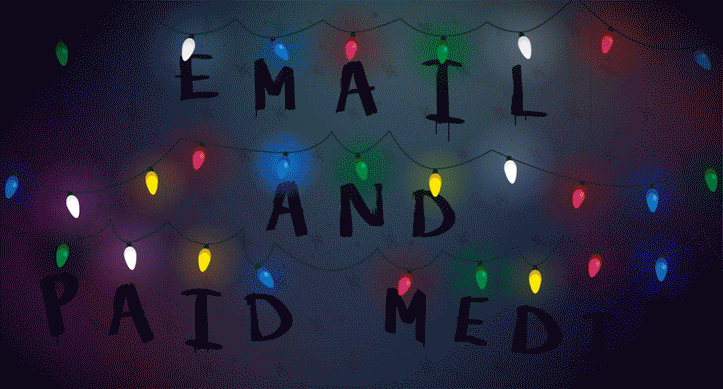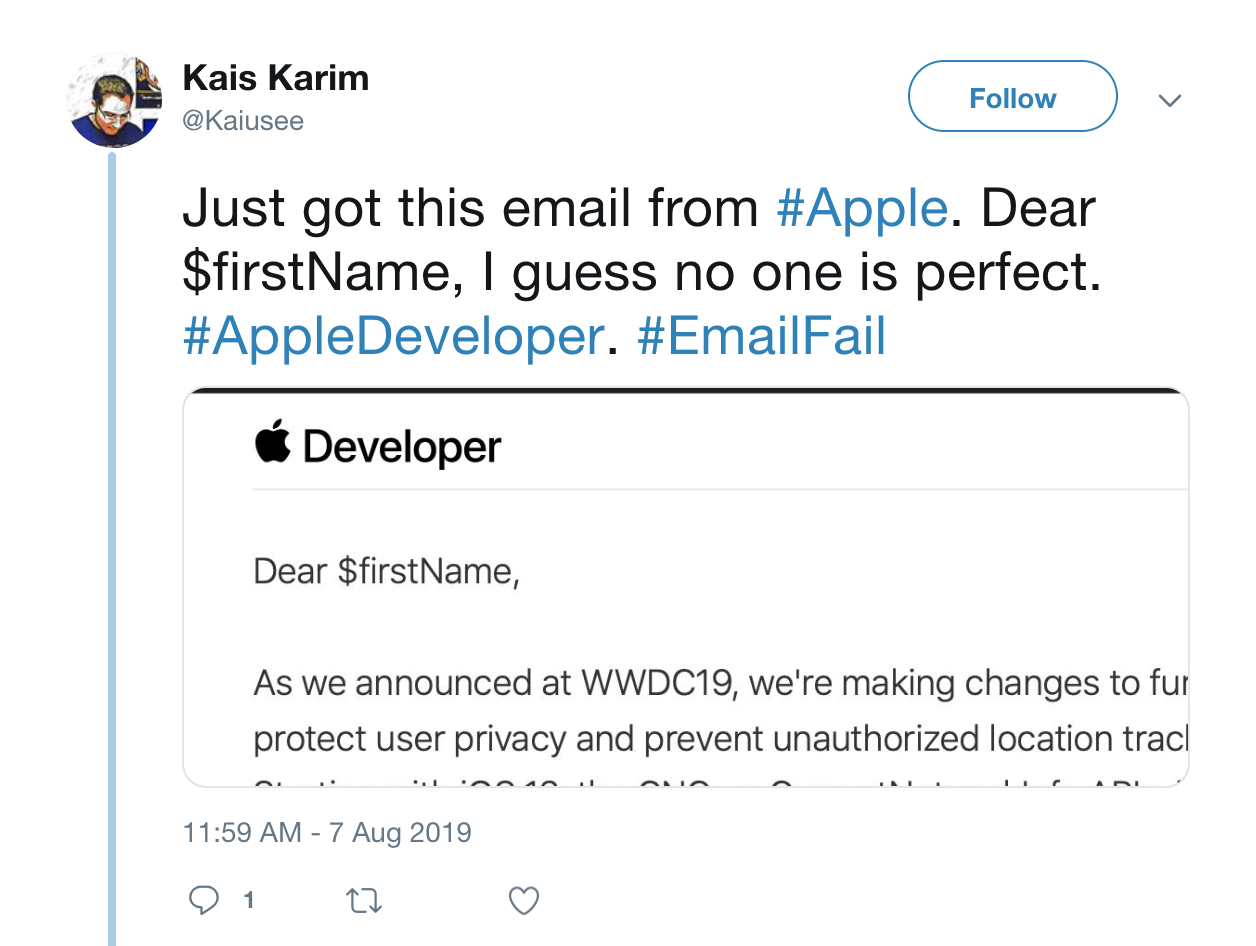Email and Paid Media Don’t Have to Be Annoying

Steve Harrington is unarguably one of the best characters on Stranger Things. And believe it or not, there's a lot we can learn about paid media and email from Steve.
Hear us out.
Without giving too much away to those of you who have apparently lacked internet access since July, season three of Stranger Things features a goofy, lovable Steve Harrington who scoops ice cream and decodes Russian communications with his quirky friends at the Starcourt Mall.
Steve wasn’t always like this, though. Step back in time with us to 2016, when the Billboard charts were dominated by an apologetic Justin Bieber, Caribbean Drake and some group called The Chainsmokers.
In 2016, Steve Harrington was the classic mid-80s prom king. Large hair, cool car and a disgustingly self-centered attitude. This was not the Steve Harrington we know and love, the Steve Harrington that routinely defends a group of prepubescent wonderkids who are somehow always at the center of universe-altering drama involving (*SPOILER ALERT*) Russians and fertilizer.
Just like season one Steve Harrington, email marketing and paid media suffer from a less than stellar public perception, especially when done poorly. Nearly everyone has, at one time or another, bemoaned that brand that won’t stop emailing them or those ads that seem to follow them like a poorly disguised private eye.

Source: PopBuzz
Strong email and paid media campaigns rely heavily on customer data in order to deliver the type of personalized content that 78% of consumers want. As marketers, we love the power of email and paid media. There is more customer information at our fingertips in these two channels than any other, and because of that, we’re able to create unique segments and targeting parameters to deliver the right person the right message, at the right time.
But the problem is that, as consumers, we hate the power of email and paid media. In fact, we find it annoying and creepy as hell. That’s because there are still so many digital marketing “experts” out there throwing sh*t at the wall and hoping it sticks. They look solely at vanity metrics and don’t think about if what they are doing is helping or hurting the customer.
Plenty of marketers still think like Steve Harrington from season one of Stranger Things — too cool for everyone and thinking they can do what they want without consequences. It’s time for that pivotal moment when you realize that’s not the way to make people like you, your product or your brand.
So how do you make your email and paid media strategy more like the sweet, lovable season three Steve, the Scoops Ahoy employee trying to be a good role model and save Hawkins (and the world) from total annihilation?
We’re glad you asked, and the answer is pretty simple.
*Cue the two-minutes-too-long montage*
Instead of thinking of new ways to just reach consumers during every stage of the buyer journey, focus on helping them. You can start by being less obnoxious, add more value, and know the best time and place for your communications.
For example, just because someone is in the “awareness” stage doesn’t mean they need to see 12 ads for the same product in on a single webpage. And just because someone is in the “decision” phase doesn’t mean they deserve five emails dumped in their inbox reminding them of a product they left in their cart. Communicate to your customers in a way that makes them feel excited that your brand is showing interest — not creeped out or annoyed.
Paid media is incredibly easy to get wrong, especially when it comes to retargeting. We’ve got a few surprisingly simple tips that can make your ads more valuable and much less aggravating.
Frequency Caps Are Your Friend (and Friend’s Don’t Lie)
In the spirit of honesty, we’ll admit something: ads can be very annoying. Many advertisers forget about one of paid media’s unsung heroes — the frequency cap. Frequency caps limit the number of impressions served per user, per day (or hour, or week, etc.). Rather than spam users with 50 impressions per day, limit their exposure to a reasonable number. Start by analyzing click-through rates. Low CTRs may indicate that you need to lower frequency caps to prevent ad fatigue. How many commercials have been ingrained so deeply in your subconscious that you can never get those jingles out of your head?
Don’t be those commercials. You’re season 3 Steve. Use frequency caps.

Source: Giphy
Exclusions, Exclusions, Exclusions
How many times have you purchased something online, only to be shown an ad for the exact same product you just purchased? Retailers love retargeting, but they haven’t seemed to master the art of excluding past purchasers yet. Of course, everyone wants repeat customers. But if y’all really think I’m about to buy the exact same pair of shoes twice in a single week, you’re very wrong. The exclusion period for purchasers obviously depends on average purchase frequency for your product or service, but some respite from ads is necessary for nearly every brand.
Cater to the User, but Don’t Creep Them Out
Personalized advertising is amazing, and as we said earlier, it’s what the majority of consumers prefer. But ads that get too personal send shivers down users’ spines faster than a Demogorgan in pursuit. For carefully constructed retargeting audiences, you need to use messaging that encourages the user to take whatever action you want them to take. You don’t, however, need to call out the exact actions that put them in your hyper-specific retargeting pool in the first place. “Hey, you three-day post engager at Starcourt Mall. We know you looked at that lava lamp. How about you clear off some space on that nightstand crowded with self-help books and make room for this groovy lamp? It’s got LEDs, we know your power bill was high last month.”
Try something a little less specific. Your customers will appreciate it.
Know When to Leggo My Eggo
Like any relationship, sometimes you have to know when to let go and move on. If someone hasn’t visited your website, engaged with your ads or shown even remote interest in your brand for over a year, it’s probably time to drop them from your retargeting segments. Obviously, there are plenty of exceptions to that, but with most brands, it’s unlikely that spamming users with ads for 365 days after they visited your website once is suddenly going to bring them back to you for a purchase. Let them come back to you on their own time, and your relationship will be stronger for it. Don’t force something that isn’t working for either of you.
Similar to online advertising, if you listen to a few basic rules for email, you’ll be able to easily provide a better experience for all of your subscribers.
Remember, Less Is More
Forty-nine percent of consumers say they receive too many marketing emails. When creating your email calendar, remember to account for all the different ways a subscriber could possibly receive an email from your brand. Ask yourself if they are included in multiple audiences. If there are multiple promotions happening, are they involved in any automations? Etc. If there’s any possibility of overlap, segment your subscribers so you aren’t bombarding their inbox.
Use Back-Ups for Personalizations
Everyone makes mistakes (even Apple!), but if you are going to make the effort to use personalized data in your emails, like first names, then also put in the effort to ensure something somewhat normal appears if a subscriber doesn’t have a name in your database. A great way to check if you’ve used your back-ups correctly is to take advantage of tools within your ESP or through a third-party software. Remember, nothing seems more disingenuous than a super personalized message addressed to %%FirstName%%.

Source: Twitter
There’s More to Personalization Than Names
If you’ve mastered the art of creating a fallback option for subscribers’ first names, it’s time to expand what you think of when you hear the term “personalization.” Take this a step further and utilize data from subscriber behavior and your preference center to provide your customers with a perfectly personalized message.
Focus on Your Engaged Audience
In the age of GDPR and CCPA, more marketers are understanding the consequences of emailing users who have not given explicit permission to do so. While it’s great that more brands are following these guidelines, there are still plenty of subscribers who probably don’t want to receive emails from them. A way to make sure you are emailing users who want to receive your emails is to segment through open activity, ideally into two or three (maybe even more) sections. Chances are if someone hasn’t opened an email from you in over six months, they aren’t interested in your next promotion. But someone who has an average open rate of 50% or higher is much more likely to engage with what you are offering.
Now that you know how to improve your paid media and email strategies individually, it’s time to take advantage of the power they bring when they work together like Steve and Robin.
Abandoned Cart Campaign
Paid media is a great way to drive users to your site, but what happens once they get there? Users shop, find a product they like and add it to their cart. But wait! Payday isn’t until the end of the week and that cool, self-cleaning litter box contraption is kind of expensive. Sure, you can serve ads to users who leave products lonely and forgotten in their cart, but what if there was a better way?
Email is an amazing way to remind these users (gently, and not more than once) that their lives would be so much better if they weren’t cleaning that damn litter box manually. Auto-triggered reminder emails served one to two days after they leave your site can help nudge consumers toward a product they wanted while increasing conversion rates, all without additional, potentially wasted ad spend.
Retarget Your Inactive Email Audience
Remember how we just told you not to send emails to subscribers that haven’t opened an email from you in over six months? That’s where paid media comes in. Using best practices and tips outlined above, you can create specific retargeting campaigns for those users. Since marketing emails are clearly not doing it for them, your brand can now connect in a much better way. Well-timed and subtle display or social ads can help remind users about that brand they once subscribed to emails for, all without flooding their inbox with more emails they aren’t opening.
Retarget Audiences Based on Email Behavior
Email behavior is also a great way to build audiences for paid media. You can serve relevant ads to users who frequently click certain links in emails to promote sales or cultivate social engagement. Users that open, but don’t further engage with emails might just need a reminder at the right time. Perhaps an RLSA search campaign that ensures your brand is top of mind when users search for related products and services. Behavioral audiences based on email behavior can be time-consuming to create, but pay dividends when it comes to moving users through the funnel (at their own pace, of course).
As marketers, we want to help brands and consumers connect, but as consumers, we want to be treated with respect and brought personalized, valuable content from brands. It’s time email and paid media marketers start prioritizing consumers over vanity metrics.
Just like Steve, the negative reputation of email and paid media can be salvaged. But only if we stop being so obnoxious and provide more value, focus on our hair and commit to the right timing. Although we’re marketers, we’re people first, and if we want to change behavior and help others, it’s time we actually start being helpful.
Comments
Add A CommentI was suggested this blog by means of my bro. I am not sure whether or not this publish is written by means of him as no one else understand such precise about my problem. You’re wonderful!
Great article. Thanks for sharing this information. A lot of help for email marketing and paid media. I can try some of this.
I have learned something new from your blog. I have been worried about the morning but now I have solved it. The question is about bought a domain name, now what to do?
Much thanks for posting and sharing this incredible article. It is so interesting. I need to know some other data about this site. So please give me this news rapidly. I like your blog and it is so wonderful. I need to peruse so much blog.